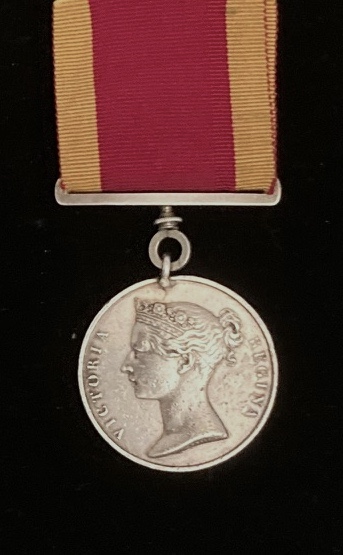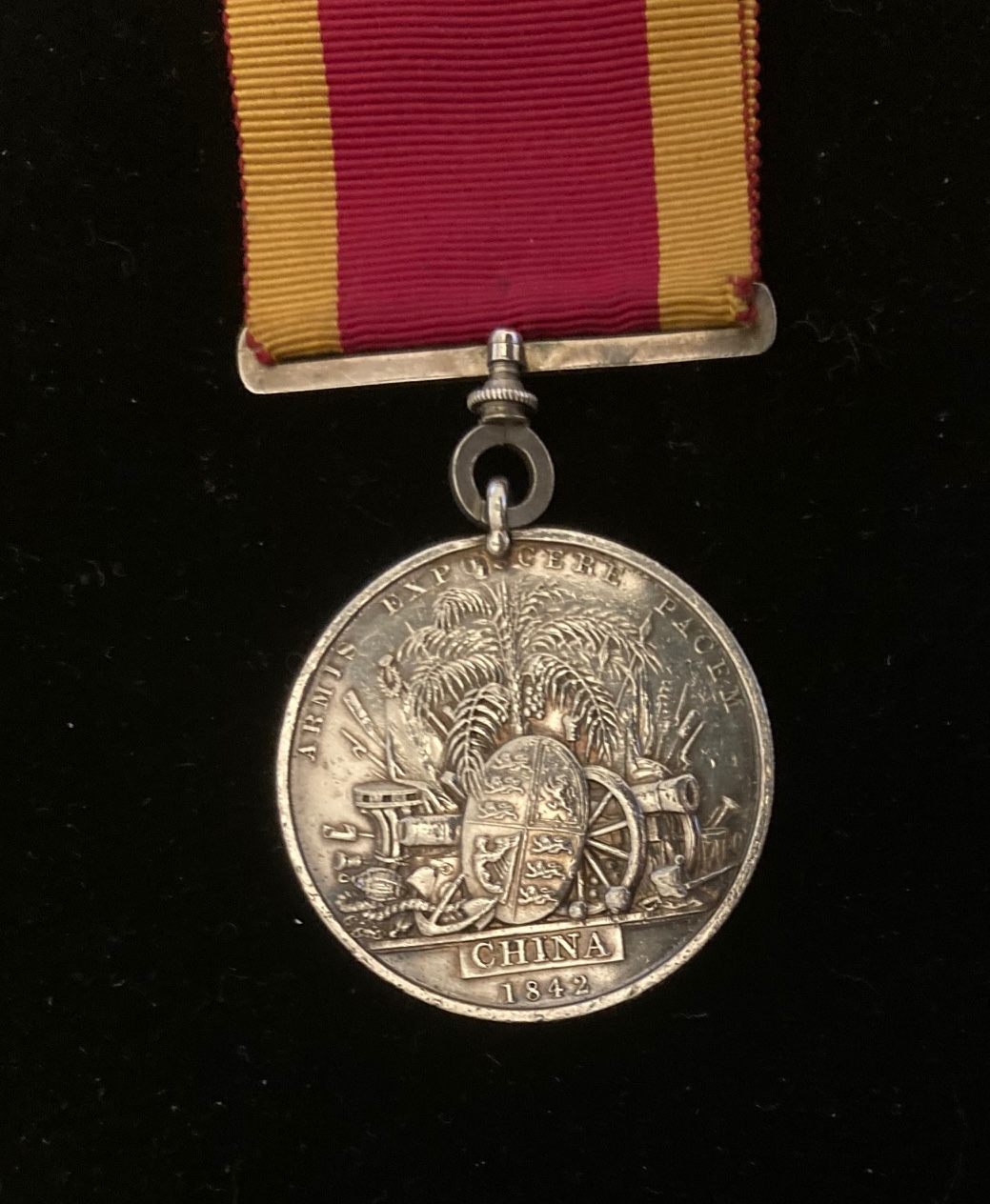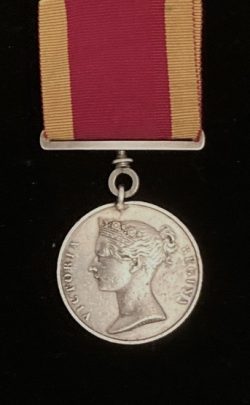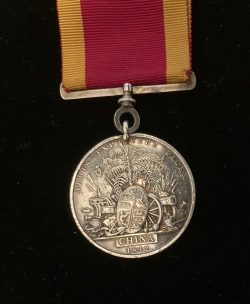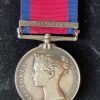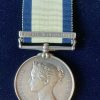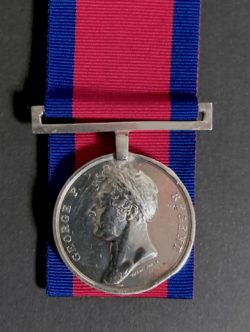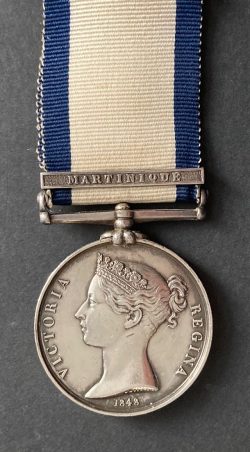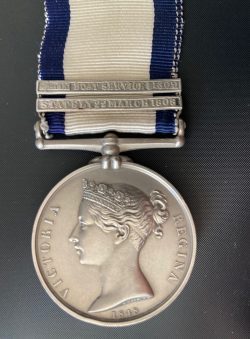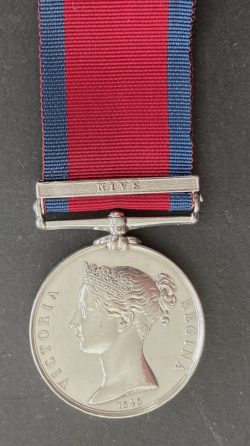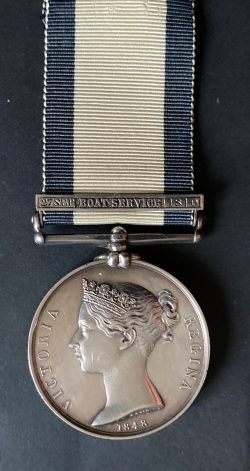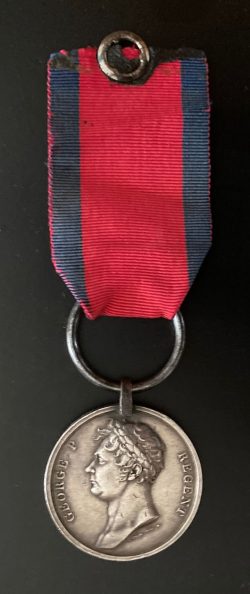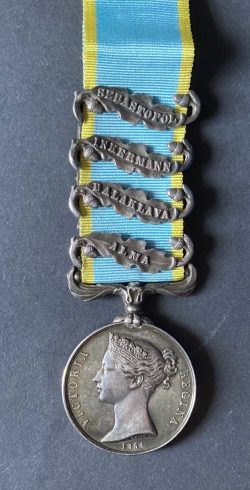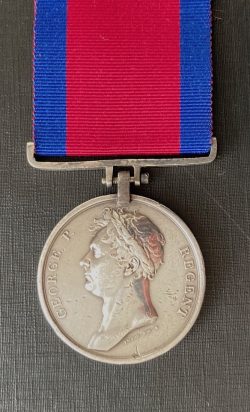Subtotal: £2,050.00
China 1842, Lieutenant , 55th with good service details being engaged at various hard fought actions
£1,375.00
Out of stock
China 1842,
E. Pitman Lieutenant , 55th. Regiment.
With stright bar and swivel suspension.
Harts record at Amoy, Chusan, Chinhai, and Chin Kiang. Foo
His record of service expands ‘Served in the China Expedition 1841-42, was present at the capture of Amoy, the capture of Chusan and the city of Ting-hai and the assault and capture of Tehing-Kiang-Foo (Chin-Kiang)
In the Battle of Amoy in August 1841. The regiment was the first to land when British forces disembarked from boats. At the Capture of Chusan in October 1841. It landed on a beach and then assaulted an enemy strong point called Guards Hill, where it ascended under heavy fire but eventually took the hill. It then proceeded to take the heights overlooking Ting-hai and then immediately descended and placed its regimental colours on the walls of the city. After the battle, a detachment of the 55th and 18th Regiment of Foot were left to garrison the city. On 10 October 1841 the 55th again was part of the force that engaged Qing troops at the Battle of Chinhai: the regiment was left to garrison the city after the battle and remained there for the remainder of the year.
21 July 1842 the Battle of Chin-kiang in the 1st Opium War when General Sir Hugh Gough’s 6,907 British & Indians of the British East India Company defeated Qing Empire Commander Hai Ling’s 1,583 Manchu & 2,700 Han soldiers & several thousand militia. Chin-kiang guarded Caoyun Canal & its Yangtze River connection. It was key to China’s grain transport. Most of its guns had been sent to Wusong. Hai Ling had little artillery. His men mostly used swords & spears.
Gough blockaded Chin-kiang in mid-July. He attacked on 21 July. The 1st Brigade (2,318 men) landed at the Jinshan Highlands at dawn. They attacked Qing forces stationed outside Chinkiang. With no support from inside & exhausted from a long night march, the Qing broke after several hours. Gough planned for Schoedde’s 2nd Brigade (1,000: 55th Foot; 2nd & 6th Madras Native Infantry) to scale Chinkiang’s east wall. Bartley’s 3rd Brigade (2,155: 18th & 49th Foot; 14th MNI) would take the West Gate.
At 07:00, Schoedde landed at Beigu Mountain, north of Chinkiang. The 2nd MNI & Madras Rifles created a diversion on the east wall, drawing away the Qing. This let the 55th & 6th MNI scale a bastion at the northeast corner. Realizing their mistake, the Qing hurried back. They found the 55th & 6th MNI inside the city. Matchlock fire pinned down the 55th. The 6th MNI fought to the Northeast Gate. A fortified guardhouse defended it.
After fierce fighting they broke in, bayonetted the defenders & opened the gate. The 2nd MNI poured in. They hurried to aid the 55th, who were taking heavy fire from a guardhouse on the north wall. They stormed it along with the 55th’s grenadiers in fierce bayonet on sword combat.
Gough lost 37 dead, 128 wounded, 3 missing. Hai Ling lost 239 dead, 169 wounded, 73 missing. Gough’s men sacked the city for several days. They burned down large parts of it, then marched to Nanjing. With his grain supply disrupted Daoguang Emperor Mianning sued for peace. The Nanjing Treaty in August ended the war. China ceded Hong Kong to the EIC & paid a huge indemnity to compensate them for the opium they’d lost.
Edmund Pitman, B. 1819, son of Major James Pitman of Dunchideock House, Dunchideock, Devon. 12th of 18th children !.
Commd. Jan 1837, Lieut. September, 1839, at some point Lieut & Adjutant , 1st R. Devon Militia. Royal Hospital Chelsea 1860 records Edmund Pitman, 1st East Devon Militia, ‘A lunatic paid by the Pay Office now paid by the War Office.’ died 1882, admitted to Wonford House, Devon, county lunatic asylum until death, buried Shillingford St George, Devon, appears to have fallen through the system as not struck off by Auxilliary Forces until 1889 as ‘Insane, paid by W.O. no pay been traced on account of officer retd.’
A well earned, hard fought for medal.
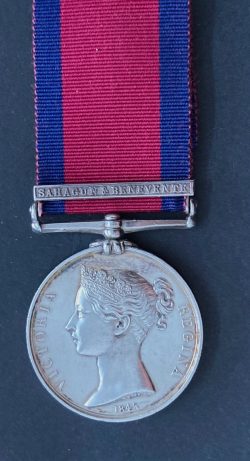 Military General Service single clasp Sahagun & Benevente, 7th Light Dragoons
Military General Service single clasp Sahagun & Benevente, 7th Light Dragoons 